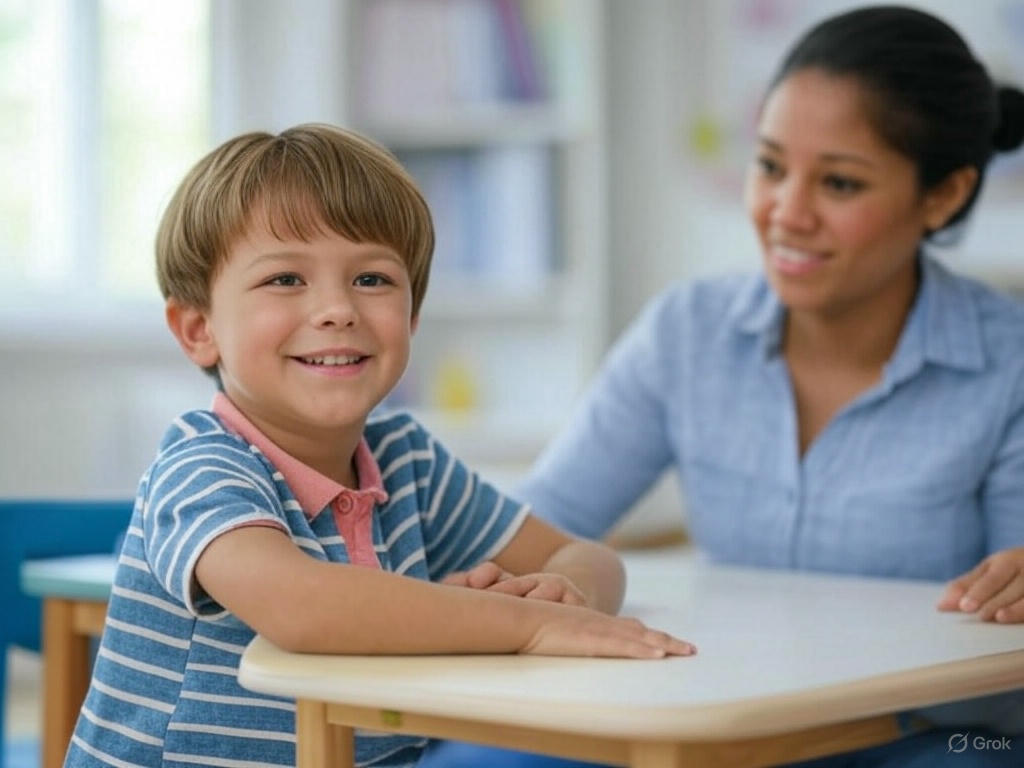Signs of Secure Attachment in Children
Understanding secure attachment is key to fostering emotional stability, trust, and independence in children.
Recognizing Emotional Stability in Children
Emotional stability is one of the most prominent signs of secure attachment in children. Children who feel securely attached are better equipped to regulate their emotions, even in challenging situations. For example, a child who experiences disappointment may express their feelings calmly rather than resorting to tantrums.
Research shows that children with secure attachment are less likely to develop anxiety disorders. According to a study published in the Journal of Child Psychology, securely attached children demonstrate higher levels of emotional resilience compared to their peers.
Parents and caregivers can foster emotional stability by providing consistent support and validating their child’s feelings. This helps children feel safe and understood, which is crucial for developing secure attachment.
Real-world examples include children who can recover quickly from minor setbacks, such as losing a game or receiving constructive criticism, without becoming overly distressed.
The Role of Trust in Secure Attachment
Trust is a cornerstone of secure attachment in children. When children trust their caregivers, they feel confident that their needs will be met, which fosters a sense of security. This trust is built through consistent and responsive caregiving.
For instance, a securely attached child will seek comfort from their caregiver when they are scared or upset, knowing that their caregiver will respond appropriately. This behavior is a clear sign of secure attachment in children.
Studies indicate that trust developed in early childhood lays the foundation for healthy relationships later in life. Children who trust their caregivers are more likely to form trusting relationships with peers and adults as they grow older.
Parents can nurture trust by being reliable and attentive. For example, consistently showing up for school events or keeping promises helps children feel secure and valued.
Signs of Healthy Independence in Kids
Securely attached children exhibit healthy independence. They are comfortable exploring their environment and trying new activities while knowing they can return to their caregiver for support if needed.
For example, a child who confidently joins a new sports team or participates in a school play demonstrates healthy independence, which is a sign of secure attachment in children.
Encouraging independence involves striking a balance between providing support and allowing autonomy. Parents can foster independence by giving children age-appropriate responsibilities, such as packing their school bag or choosing their clothes.
Healthy independence also includes the ability to make decisions and solve problems. Children with secure attachment are more likely to approach challenges with confidence and resilience.
How Children Express Comfort with Caregivers
Comfort with caregivers is another key sign of secure attachment in children. Securely attached children seek physical and emotional closeness with their caregivers, especially during times of stress or uncertainty.
For example, a child who hugs their parent after a long day at school or shares their worries openly demonstrates comfort and trust. This behavior reflects the strong bond between the child and caregiver.
Parents can encourage this comfort by being emotionally available and responsive. Listening actively and providing reassurance helps children feel safe and supported.
Case studies show that children who express comfort with their caregivers are more likely to develop positive coping mechanisms and emotional resilience as they grow older.
Positive Social Interactions with Peers
Securely attached children tend to have positive social interactions with their peers. They are more likely to share, cooperate, and resolve conflicts effectively, which are all signs of secure attachment in children.
For instance, a child who invites a friend to play and shares their toys demonstrates social skills that stem from secure attachment. These interactions are crucial for building friendships and social networks.
Parents can support positive social interactions by modeling good behavior and encouraging empathy. Role-playing scenarios, such as resolving a disagreement, can help children develop these skills.
Statistics show that children with secure attachment are less likely to experience bullying or social isolation, highlighting the importance of fostering secure relationships early on.
Managing Stress and Resilience in Children
Resilience is a hallmark of secure attachment in children. Securely attached children are better equipped to manage stress and bounce back from adversity.
For example, a child who remains calm during a school exam or adapts to a new classroom environment demonstrates resilience, which is a sign of secure attachment in children.
Parents can help build resilience by teaching coping strategies, such as deep breathing or positive self-talk. Providing a stable and supportive home environment also plays a crucial role.
Studies show that resilience developed through secure attachment contributes to better mental health outcomes in adulthood, emphasizing its long-term benefits.
Open Communication and Expressing Needs
Open communication is a vital sign of secure attachment in children. Securely attached children feel comfortable expressing their needs and emotions to their caregivers.
For example, a child who tells their parent they are feeling sad or asks for help with homework demonstrates open communication, which is a sign of secure attachment in children.
Parents can encourage open communication by creating a safe space for dialogue. Asking open-ended questions and actively listening helps children feel heard and understood.
Real-world examples include children who discuss their day openly or seek advice from their parents, showcasing the trust and comfort inherent in secure attachment.
Developing Empathy and Understanding in Relationships
Empathy is another sign of secure attachment in children. Securely attached children are more likely to understand and respond to the emotions of others, fostering healthy relationships.
For instance, a child who comforts a friend who is upset or shares their snack with a peer demonstrates empathy, which is a sign of secure attachment in children.
Parents can nurture empathy by teaching children to recognize emotions and encouraging acts of kindness. Reading books about empathy or discussing real-life scenarios can be effective strategies.
Case studies show that children with secure attachment are more likely to develop strong interpersonal skills, which are essential for success in both personal and professional life.
Confidence in Exploring New Environments
Securely attached children exhibit confidence when exploring new environments. They feel safe venturing into unfamiliar situations, knowing they can rely on their caregiver for support if needed.
For example, a child who eagerly participates in a school field trip or tries a new hobby demonstrates confidence, which is a sign of secure attachment in children.
Parents can encourage exploration by providing reassurance and celebrating their child’s achievements. This helps children feel secure and motivated to try new things.
Statistics show that children with secure attachment are more likely to excel academically and socially, highlighting the importance of fostering confidence early on.
Building Strong Bonds Through Consistent Support
Consistent support is essential for developing secure attachment in children. When caregivers provide reliable and nurturing care, children feel safe and valued.
For example, a parent who regularly attends their child’s school events or spends quality time with them builds a strong bond, which is a sign of secure attachment in children.
Parents can strengthen bonds by being present and attentive. Simple actions, such as reading together or having family meals, contribute to a child’s sense of security.
Studies show that consistent support from caregivers leads to better emotional and social outcomes, emphasizing its importance in fostering secure attachment.



